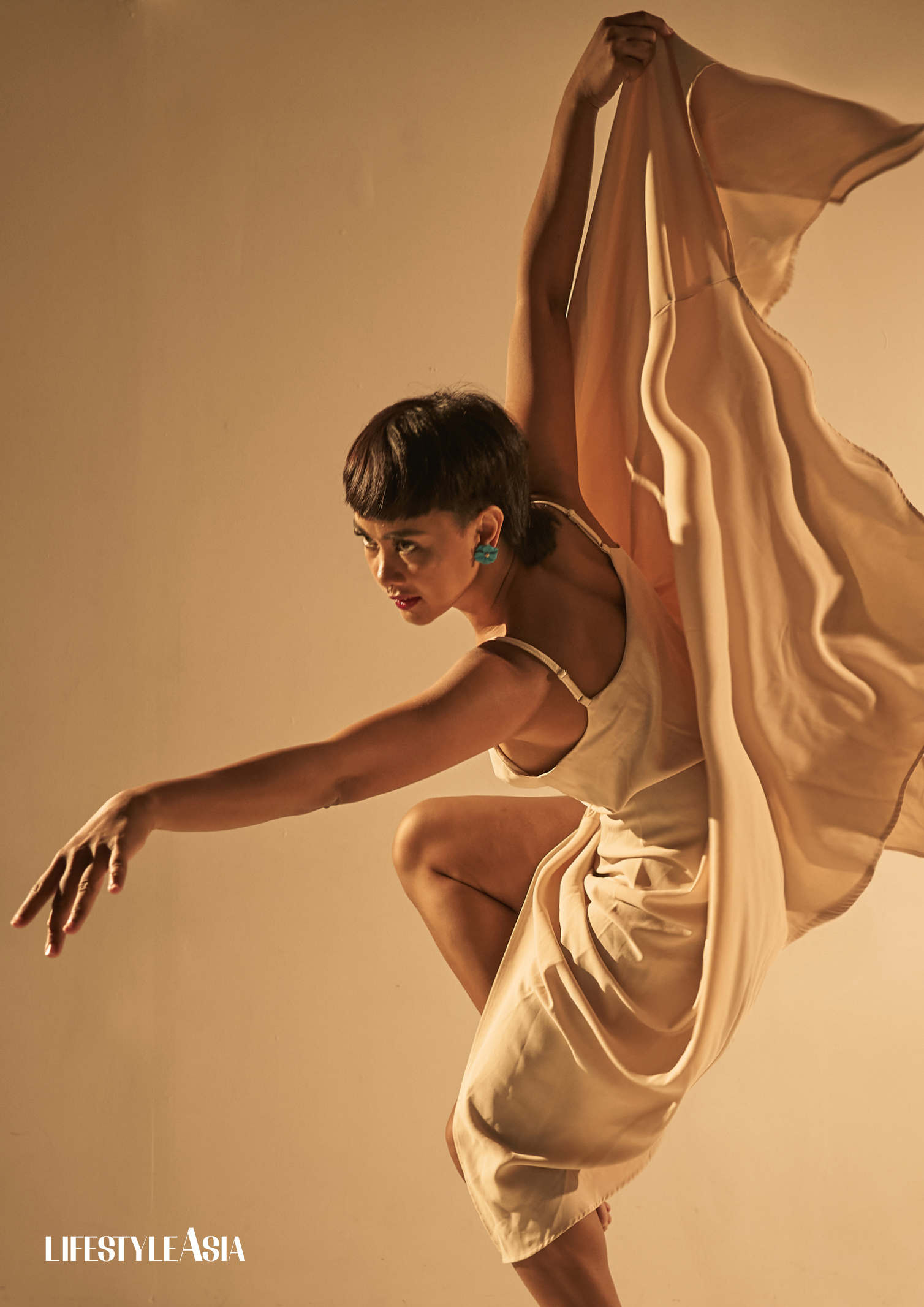A dancer and choreographer, Ea Torrado sees dance as a form of freedom and expression, exploring global issues through her art.
The morning of the shoot was peaceful. Ea Torrado arrived with a smile, ready to share her stories. She seemed approachable, someone you could trust. She wore pink dangling earrings that matched her flowing pink dress.
Ea’s journey in dance began when her grandparents enrolled her in a ballet school at age seven. By the time she was 12, she had earned a full-time scholarship for dancing. She has been dancing ever since, even in her 30s.
“I went abroad for a while. When I came back, I think in my mid-20s, I became an independent contemporary dancer. At 27, I formed Daloy Dance Company, a dance theatre group primarily serving as a platform for my works.”
READ ALSO: Rhythm Of Life: A Week-Long Celebration To Mark International Dance Day


A Beautiful Art Form
For a dancer like Ea, one can’t help but notice her passion for contemporary dance. When Lifestyle Asia asked her what inspired her to pursue this form and how it differs from others she’s explored, she explained, “In ballet, it’s beautiful. You can take on roles like a princess or a butterfly, but there are very specific lines and movement vocabulary. In contemporary dance, I found more freedom of expression. What inspired me is the idea that I could create anything and find my own movement vocabulary.”
Initially, Ea was influenced by the popularity of shows like So You Think You Can Dance, which presented contemporary dance as more commercial.
However, she was more interested in contemporary dance as a reflection of current social, political, environmental, and even sexual or spiritual themes.
“I wanted to explore what is contemporary for me personally, in the places I belong to, and how I could create work related to that. I aim to create dances that defy easy categorization and explore more play, avoiding rigid boxes of what is the ‘right’ form or movement language to use.”
Each Step A Masterpiece

Ea is a highly expressive person, and her eyes light up when she talks about what she loves. She shared a recent memorable experience in dance.
“One of the most recent ones was early this year, in January, when we performed at the Cultural Center of the Philippines’ experimental black box theater,” she said.
“The piece was called ‘ItikLandia.’ It was a collaborative effort with five dance artists, and we worked on it for a year. The performance was very memorable because it started with the idea of the itik itik dance, which evolved into embodying ducks and then into storytelling,” she added.
Later on, the performance evolved to include environmental scenes, rap, and an overall sense of fun.
This experience was particularly significant for Ea, marking a shift from the themes of sadness, loneliness, and existential issues that often characterized her earlier work as a choreographer.
Now, she feels like she’s entering a new phase where silliness is also valued for its wisdom and enjoyment. She’s delving into the more playful and humorous aspects of the Filipino psyche, using comedy to tackle important or complex topics.
Ea finds this approach powerful and is eager to explore it further in her work.
Love For The Art Of Movement


Ea aims to convey a range of emotions, depending on the context. Her focus often centers on environmental topics, global mental health issues, and the themes of liberation, empowerment, sensuality, sexuality, and spirituality. She also explores the concept of Filipino identity, asking, “What makes us Filipino?”
With her extensive experience in the industry, Ea has valuable advice for aspiring dancers and choreographers. She emphasizes the importance of patience and perseverance, as mastery takes time and repetition. She advises prioritizing technique and then focusing on artistry.
For aspiring choreographers, she encourages them to start creating and to build a network of peers and mentors. Ea suggests reaching out to those whose work they admire and exposing themselves to a variety of art forms to train their eyes to recognize beauty and uniqueness. She also stresses the importance of being open to feedback.
Life’s Gift


For Ea, dancing is more than just movement; it’s a soul-stirring experience that propels her life forward. When asked about her definition of true wealth and luxury, she answered with: “time.”
Ea values rehearsals, where she can express gratitude to her dancers for their time. She finds rehearsals and the lead-up to a show beautiful, recognizing the effort put into them.
She believes that no matter how impressive a performance may be, without sufficient rehearsal time, its impact is diminished.
For her, true wealth and luxury lie in having time, as it’s something that can’t be reclaimed once it’s gone.
By the end of the interview, Ea showed genuine happiness as she discussed dancing. She embodies a deep love for her craft and for teaching others, expressing gratitude for the time people dedicate to rehearsals and encouraging creativity.
In the world of art, it’s crucial to put yourself out there, and that’s exactly what Ea does and intends to keep doing—dancing to the rhythm of the music and the ever-changing times.
This is our glimpse into Ea Torrado’s world, and one thing is clear: her passion for dance is boundless. She embodies the joy of movement, the art of teaching, and dedication to her craft. She reminds us to embrace creativity and always keep moving to the beat of our life’s rhythm.
CREDITS
Art Direction by Paolo Torio
Shoot Coordination by Mae Talaid
Photos by Kieran Punay of KLIQ, Inc.





